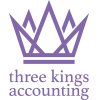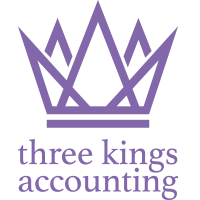Overview
The cost of purchasing capital equipment in a business is not a revenue tax deductible expense. However tax relief is available on certain capital expenditure in the form of capital allowances.
The allowances available depend on what you are purchasing. Here is an overview of the types of expenditure which qualify for capital allowances and the amounts available.
Capital allowances are not generally affected by the way in which the business pays for the purchase. So where an asset is acquired on hire purchase (HP), allowances are generally given as though there were an outright cash purchase and subsequent instalments of capital are ignored. However finance leases, often considered to be an alternative form of ‘purchase’ and which for accounting purposes are included as assets, are generally denied capital allowances. Instead the accounts depreciation is usually allowable as a tax deductible expense.
Any interest or other finance charges on an overdraft, loan, HP or finance lease agreement to fund the purchase is a revenue tax deductible business expense. It is not part of the capital cost of the asset.
If, alternatively, a business rents capital equipment, often referred to as an operating lease, then as with other rents this is a revenue tax deductible expense so no capital allowances are available.
Plant and machinery
This includes items such as machines, equipment, furniture, certain fixtures, computers, cars, vans and similar equipment you use in your business.
Note there are special rules for cars and certain ‘environmentally friendly’ equipment and these are dealt with below.
Acquisitions
The Annual Investment Allowance (AIA) provides a 100% deduction for the cost of most plant and machinery (not cars) purchased by a business up to an annual limit and is available to most businesses. Where businesses spend more than the annual limit, any additional qualifying expenditure generally attracts an annual writing down allowance (WDA) of 18% (or 6% for the special rate pool) depending on the type of asset. The maximum amount is currently set at £1 million. Cars are not eligible for the AIA, so will only benefit from the WDA (see special rules for cars).
Please contact us before capital expenditure is incurred for your business in a current accounting period, so that we can help you to maximise the AIA available.
Full expensing
From 1 April 2023 companies investing in qualifying new and unused plant and machinery benefit from first year capital allowances.
Under this measure, a company is allowed to claim:
- a first year allowance of 100% on most new and unused plant and machinery expenditure that ordinarily qualifies for 18% main rate WDAs (Full Expensing).
- a first year allowance of 50% on most new and unused plant and machinery expenditure that ordinarily qualifies for 6% special rate WDAs.
The relief specifically excludes expenditure on cars, and most plant and machinery for leasing. The relief is only available for companies and not for unincorporated businesses.
Pooling of expenditure and allowances due
- Expenditure on most items of plant and machinery are pooled rather than each item being dealt with separately with most items being allocated to the main rate pool.
- A WDA on the main rate pool of 18% is available on qualifying expenditure incurred in the current period not covered by the AIA or not eligible for AIA as well as on any balance of expenditure remaining from earlier periods.
- Certain expenditure on buildings fixtures, known as integral features (eg lighting, air conditioning, heating, etc) is eligible for a 6% WDA so is allocated to a separate ‘special rate pool’, though integral features do qualify for the AIA.
- Allowances are calculated for each accounting period of the business.
- When an asset is sold, the sale proceeds (or original cost if lower) are brought into the relevant pool. If the proceeds exceed the value in the pool, the difference is treated as additional taxable profit for the period and referred to as a balancing charge.
Structures and Buildings Allowance
Expenditure incurred on business-related buildings and structures will attract an annual 3% writing down allowance on a straight-line basis. This allowance is designed to encourage investment in the construction of new structures and buildings that are intended for commercial use, the necessary works to bring them into existence and the improvement of existing structures and buildings, including the cost of converting existing premises for use in a qualifying activity. Neither land nor dwellings are eligible for relief. Where there is mixed use, for example, between commercial and residential units in a development, the relief is reduced by apportionment. No relief is available for work spaces within domestic settings, such as home offices.
Special rules for cars
There are special rules for car expenditure. Cars are not eligible for the AIA or full expensing. The treatment of car expenditure depends on when it was acquired and its CO2 emissions.
The following rules apply for cars:
| Type of car purchase | What you can claim |
| New zero emission car
purchased before 1 April 2026 (6 April 2026 for income tax) |
100% first year allowances |
| Second hand electric car | Main rate allowances (ie 18% WDA) |
| Not exceeding 50 g/km CO2 emissions | Main rate allowances (ie 18% WDA) |
| Exceeding 50 g/km CO2 emissions | Special rate allowances (ie 6% WDA) |
Non-business use element
Cars and other business assets that are used partly for private purposes, by the proprietor of the business (ie a sole trader or partners in a partnership), are allocated to a single asset pool to enable the private use adjustment to be made. For cars, the rate of WDA claimable in the single asset pool will still depend on the CO2 emissions of the car. Private use of assets by employees does not require any restriction of the capital allowances.
The allowances are computed in the normal way, however, only the business use proportion is allowed for tax purposes. This means that the purchase of a new zero emission car which costs £15,000 with 80% business use will attract an allowance of £12,000 (£15,000 x 100% x 80%) when acquired.
On the disposal of a private use element car, any proceeds of sale (or cost if lower) are deducted from any unrelieved expenditure in the single asset pool. Any shortfall can be claimed as an additional one off allowance but is restricted to the business use element only. Similarly any excess is treated as a taxable profit but only the business related element.
Short life assets
For equipment you intend to keep for only a short time, you can choose (by election) to keep such assets outside the normal pool, with the expenditure going into a single asset pool. The allowances on them are calculated separately and on sale if the proceeds are less than the balance of expenditure remaining, the difference is given as a further capital allowance. This election is not available for cars or integral features.
The asset is transferred into the main pool if it is not disposed of by the eighth anniversary of the end of the period in which it was acquired.
Long life assets
These are assets with an expected useful life in excess of 25 years when new. These assets are combined with integral features in the special rate pool.
There are various exclusions including cars and the rules only apply to businesses spending at least £100,000 per annum on such assets.
Other assets
Capital expenditure on certain other assets qualifies for relief. Please contact us for specific advice on areas such as qualifying expenditure in respect of enterprise zones, Freeports and research and development.
Claims
Unincorporated businesses and companies must both make claims for capital allowances in tax returns.
Claims may be restricted where it is not desirable to claim the full amount available – this may be to avoid other allowances or reliefs being wasted.
For unincorporated businesses the claim must normally be made within 12 months after the 31 January filing deadline for the relevant return.
For companies the claim must normally be made within two years of the end of the accounting period.
How we can help
The rules for capital allowances can be complex. We can help by computing the allowances available to your business, ensuring that the most advantageous claims are made and by advising on matters such as the timing of purchases and sales of capital assets. Please do contact us if you would like further advice.


